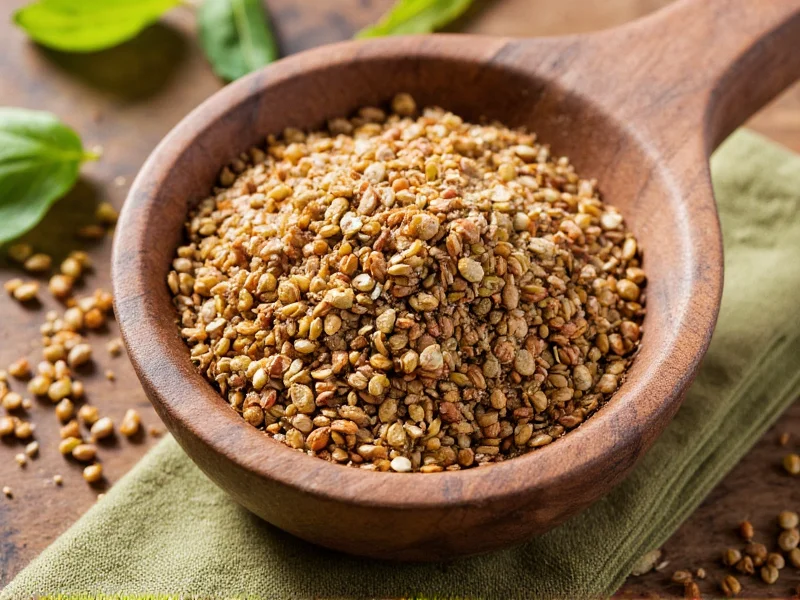Natural seasonings represent a return to culinary fundamentals, harnessing the inherent flavors of unprocessed botanical ingredients. Unlike conventional seasoning blends that often contain anti-caking agents and flavor enhancers, truly natural options maintain ingredient integrity through minimal processing methods like sun-drying, stone-grinding, and air-curing. The growing consumer preference for clean-label products has driven increased availability of these pure flavor solutions in both commercial and homemade formats.
Defining Natural vs. Artificial Seasoning Components
Understanding the distinction between natural and artificial seasoning elements requires examining ingredient lists and processing methods. Natural seasonings derive flavor from recognizable food sources, while artificial versions use laboratory-created compounds designed to mimic natural flavors.
| Characteristic | Natural Seasonings | Artificial Seasonings |
|---|---|---|
| Primary Ingredients | Whole herbs, spices, citrus peels, garlic, onion | Synthetic flavor compounds, MSG, sodium nitrate |
| Processing Methods | Air-drying, stone grinding, cold milling | Chemical extraction, high-heat processing |
| Label Identification | "Organic," "no additives," ingredient-specific names | "Natural flavors," "spice blend," vague terminology |
| Shelf Life | 6-12 months (varies by ingredients) | 18-24 months (due to preservatives) |
Common Types of Natural Seasonings and Their Culinary Applications
Natural seasoning options span global flavor profiles, each offering distinctive taste characteristics and potential health benefits. Understanding these varieties helps home cooks select appropriate blends for specific dishes.
Herb-Based Seasoning Blends
Classic herb combinations like Herbes de Provence (thyme, rosemary, oregano, marjoram) and Italian seasoning (basil, oregano, rosemary) provide aromatic complexity without sodium overload. These blends work particularly well with roasted vegetables, grilled meats, and tomato-based sauces. When creating homemade herb seasonings, use a 3:1 ratio of dried herbs to citrus zest for balanced flavor without bitterness.
Spice-Focused Natural Seasonings
Single-origin spice blends like smoked paprika rubs, turmeric-ginger mixes, and cumin-coriander combinations deliver concentrated flavor without fillers. Proper storage in dark glass containers preserves volatile oils that provide both flavor and potential antioxidant benefits. For maximum potency, toast whole spices before grinding them into custom seasoning blends.
Citrus-Infused Natural Seasonings
Dried lemon, lime, or orange zest combined with complementary herbs creates bright seasoning options ideal for fish, poultry, and grain dishes. The natural citric acid in these seasonings also functions as a mild preservative, extending freshness without artificial additives. Freeze-dried citrus powders maintain more volatile compounds than oven-dried alternatives.
Health Considerations of Natural Seasoning Choices
Choosing natural seasonings over processed alternatives offers several potential health advantages. Research indicates that whole food spice blends retain more bioactive compounds than their processed counterparts. For example, pure turmeric seasoning maintains higher curcuminoid levels compared to commercial curry blends containing fillers.
Individuals managing sodium intake particularly benefit from natural seasoning options. While conventional seasoning blends average 200-400mg sodium per ¼ teaspoon, homemade natural versions using potassium-rich herbs like dill and cilantro provide flavor without excessive sodium. Those with chemical sensitivities often report fewer reactions to seasonings containing only identifiable plant ingredients.
Identifying Truly Natural Seasoning Products
Not all products labeled "natural" meet clean ingredient standards. Consumers should look for specific indicators of genuine natural seasonings:
- Ingredient lists containing only recognizable food items (no "spices" or "natural flavors" as vague terms)
- Certifications like USDA Organic or Non-GMO Project Verified
- Transparent sourcing information (region of origin for key ingredients)
- Absence of anti-caking agents like silicon dioxide
- Color consistency matching the natural hue of component ingredients
When evaluating commercial natural seasoning blends, check for particle uniformity—truly natural blends often show visible variation in spice sizes and colors, whereas processed versions appear unnaturally uniform due to fine grinding and added coloring.
Creating Your Own Natural Seasoning Blends
Homemade natural seasonings offer complete ingredient control and freshness unmatched by commercial products. Successful DIY seasoning creation requires attention to several key factors:
Essential Equipment for Natural Seasoning Preparation
A quality spice grinder (preferably ceramic or stainless steel), fine mesh sieve, and airtight storage containers form the foundation of effective homemade seasoning production. Avoid plastic grinders that can retain previous flavors and compromise purity.
Proportional Blending Guidelines
Effective natural seasoning blends follow specific ratios to prevent flavor dominance:
- Base spices (like paprika or cumin): 50-60% of blend
- Supporting herbs (like oregano or thyme): 25-30% of blend
- Accent ingredients (like citrus zest or heat elements): 10-15% of blend
- Flavor enhancers (like mushroom powder): 5-10% of blend
Recommended Starter Blends
Three versatile natural seasoning combinations suitable for beginners:
- Simple All-Purpose Blend: 3 tbsp paprika, 1 tbsp garlic powder, 1 tbsp onion powder, 2 tsp black pepper, 1 tsp thyme
- Lemon-Herb Fish Seasoning: 2 tbsp dried dill, 1 tbsp lemon zest, 1 tsp fennel seed, ½ tsp parsley, ½ tsp chives
- Smoky Southwest Blend: 2 tbsp chipotle powder, 1 tbsp cumin, 1 tsp oregano, ½ tsp cocoa powder, ½ tsp garlic powder
Incorporating Natural Seasonings into Daily Cooking
Maximizing the flavor potential of natural seasonings requires understanding their activation methods and compatibility with different cooking techniques. Unlike processed seasonings designed for immediate flavor release, natural blends often benefit from specific preparation approaches.
Dry natural seasonings achieve optimal flavor development when "bloomed" in oil before adding other ingredients. For every teaspoon of seasoning blend, use one teaspoon of healthy oil (like avocado or olive) heated to just below smoking point. This process extracts fat-soluble flavor compounds that water-based cooking alone cannot release.
When using natural seasonings in slow cooking applications, add them during the last 30-60 minutes of cooking to preserve volatile aromatic compounds that dissipate during prolonged heating. For raw applications like salad dressings, allow seasoning blends to steep in the dressing base for at least 15 minutes before use to fully hydrate the ingredients.











 浙公网安备
33010002000092号
浙公网安备
33010002000092号 浙B2-20120091-4
浙B2-20120091-4